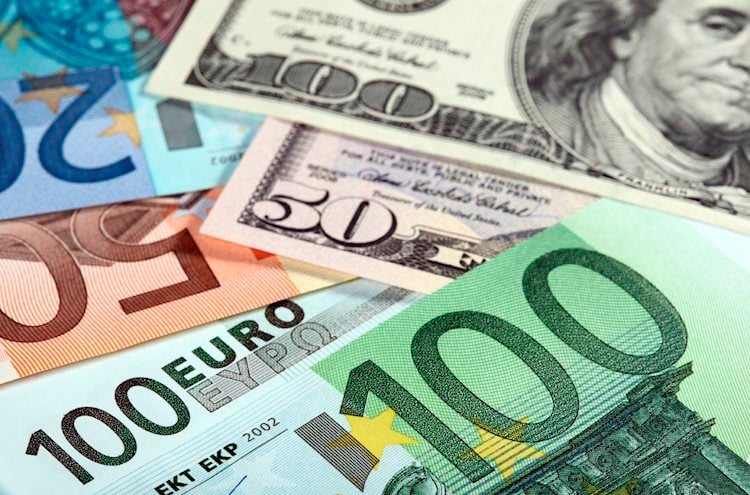- Euro posts decent gains after two daily pullbacks in a row.
- Stocks markets in Europe extends the weekly bearish note.
- Renewed weakness in the US Dollar props up the pair so far.
- US traders return to their desks following Monday’s holiday.
- Investors’ attention remains on the Fed, ECB future moves.
- Cautiousness is expected to gather steam ahead of Powell’s testimonies.
The European currency (EUR) has gained some upward momentum, prompting EUR/USD to leave behind two consecutive daily declines and resume its recent upward trend on turnaround Tuesday.
This improved sentiment towards riskier assets can be attributed in part to the People’s Bank of China’s (PBoC) recent decision to cut its 1-year medium-term lending facility (MLF) by 10 bps, aimed at bolstering the Chinese economy as it emerges from the pandemic.
Investors are closely monitoring the potential interest rate decisions by the Federal Reserve and the European Central Bank (ECB), with both expected to resume their hiking campaigns in July.
In Germany, Producer Prices declined by 1.4% MoM in May but rose by 1.0% YoY, while the EMU’s Current Account surplus narrowed to €4B in April and Construction Output expanded 0.2% in the year to April. Next on tap comes speeches by ECB’s Board members E. McCaul and L. De Guindos.
In the US, the housing sector will be the primary focus, with speeches by St. Louis Fed member J. Bullard (a hawkish 2025 voter) and NY Fed member J. Williams (a centrist permanent voter) also on the agenda.
Daily digest market movers: ECB-speak is expected to lean towards a July hike
- The renewal of market optimism puts pressure on the US dollar.
- The PBoC lowers the 1-year medium-term lending facility (MLF) to support the ongoing slow economic rebound.
- The testimonies of the Federal Reserve’s Chair, J. Powell, will be the significant events to watch later this week.
- Currently, the primary factor influencing the price movement of the currency pair is the divergence in policies between the ECB and the Fed.
- ECB’s O. Rehn highlighted the importance of a steady decline in core prices in the euro area.
Technical Analysis: Extra gains likely above 1.0970
EUR/USD has pulled back slightly from its recent monthly high of 1.0970, which was reached on June 16. In order to continue its upward momentum, the EUR must quickly surpass this level, potentially allowing it to reach the psychological barrier of 1.1000. Further resistance levels include the 2023 high of 1.1095 (April 26), the round level of 1.1100, and the weekly high of 1.1184 (March 31, 2022), which is supported by the 200-week SMA, currently at 1.1181.
In the event that the bears take control, there is an interim contention at the 55-day SMA at 1.0881. Should this level be breached, there are no significant support levels until the May low of 1.0635 (May 31), followed by the March low of 1.0516 (March 15) and the 2023 low of 1.0481 (January 6).
ECB FAQs
What is the ECB and how does it influence the Euro?
The European Central Bank (ECB) in Frankfurt, Germany, is the reserve bank for the Eurozone. The ECB sets interest rates and manages monetary policy for the region.
The ECB primary mandate is to maintain price stability, which means keeping inflation at around 2%. Its primary tool for achieving this is by raising or lowering interest rates. Relatively high interest rates will usually result in a stronger Euro and vice versa.
The ECB Governing Council makes monetary policy decisions at meetings held eight times a year. Decisions are made by heads of the Eurozone national banks and six permanent members, including the President of the ECB, Christine Lagarde.
What is Quantitative Easing (QE) and how does it affect the Euro?
In extreme situations, the European Central Bank can enact a policy tool called Quantitative Easing. QE is the process by which the ECB prints Euros and uses them to buy assets – usually government or corporate bonds – from banks and other financial institutions. QE usually results in a weaker Euro.
QE is a last resort when simply lowering interest rates is unlikely to achieve the objective of price stability. The ECB used it during the Great Financial Crisis in 2009-11, in 2015 when inflation remained stubbornly low, as well as during the covid pandemic.
What is Quantitative tightening (QT) and how does it affect the Euro?
Quantitative tightening (QT) is the reverse of QE. It is undertaken after QE when an economic recovery is underway and inflation starts rising. Whilst in QE the European Central Bank (ECB) purchases government and corporate bonds from financial institutions to provide them with liquidity, in QT the ECB stops buying more bonds, and stops reinvesting the principal maturing on the bonds it already holds. It is usually positive (or bullish) for the Euro.
